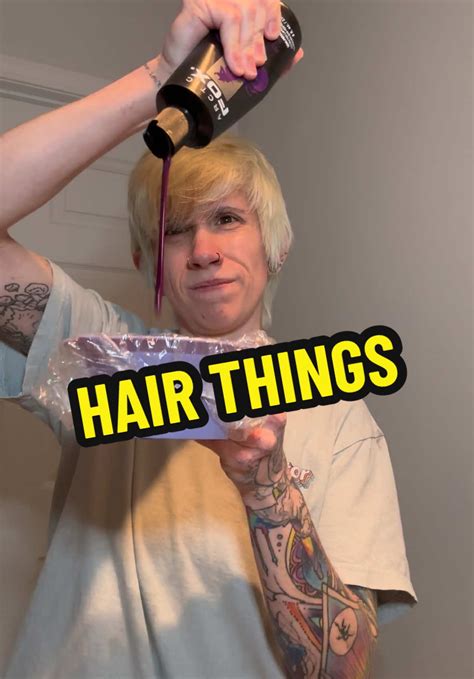Introduction

The world of hair color has evolved significantly over the years, providing endless possibilities for transforming your appearance. From bold and vibrant shades to subtle and natural hues, the options for achieving your desired hair color have never been so vast. In this comprehensive guide, we delve into the latest trends, techniques, and considerations to help you navigate the exciting realm of hair color 2.0.
2 Shades of Hair Color Trends
1. Balayage and Ombre
Subtle and sophisticated, balayage and ombre techniques create a gradual transition of color, seamlessly blending multiple shades to achieve a natural-looking effect. Balayage involves meticulously hand-painting color onto the hair, resulting in a sun-kissed, beachy look, while ombre transitions from a darker base to a lighter shade at the ends, creating an elegant and eye-catching effect.
2. Foilayage
A combination of balayage and foiling, foilayage offers the precision of foils with the soft, diffused look of balayage. Color is applied to thin sections of hair and wrapped in foil, creating a subtle and dimensional effect that adds depth and vibrancy.
2 Essential Hair Color Techniques
1. Color Correction
Transforming unwanted or outdated hair color requires professional expertise. Color correction techniques involve neutralizing unwanted pigments, balancing uneven tones, and restoring hair to its desired hue. This meticulous process can restore the health and vibrancy of your hair.
2. Color Melting
For a seamless and natural-looking transition between multiple shades, color melting is the technique of choice. Different colors are blended together using a freehand application, creating a gradual and harmonious effect that flatters all hair types.
2 Key Considerations for Choosing Hair Color 2.0
1. Skin Tone
Choosing a hair color that complements your skin tone is crucial. Warmer tones suit warmer skin undertones, while cooler tones enhance cooler undertones. Consult a professional colorist for personalized recommendations.
2. Hair Texture
Hair texture can impact the appearance and longevity of hair color. Coarse hair requires more intense pigments for long-lasting results, while fine hair may require more subtle shades to avoid an overwhelming effect.
2 Common Mistakes to Avoid
1. Over-Processing
Excessive chemical treatments can damage hair, leading to dryness, breakage, and color fading. Limit color touch-ups to 6-8 weeks to maintain hair health.
2. DIY Hair Color
Home hair coloring kits may not provide the desired results or may damage hair. Professional colorists have the expertise and access to high-quality products that ensure optimal outcome.
How to: Step-by-Step Approach to Hair Color 2.0
1. Consultation and Color Selection
Schedule a consultation with a professional colorist to determine the best hair color for your desired look and skin tone. Select shades that complement your hair texture and lifestyle.
2. Prepping the Hair
Before coloring, your hair should be clean and free of product residue. Deep conditioning treatments may be recommended to prepare hair for the chemical process.
3. Application and Processing Time
Depending on the technique chosen, the colorist will apply the color to your hair and monitor the processing time to achieve the desired shade.
4. Post-Color Care
After coloring, follow the recommended aftercare instructions to maintain your hair color’s vibrancy. Use color-protecting shampoos and conditioners, avoid excessive heat styling, and trim split ends regularly.
Pros and Cons of Hair Color 2.0
Pros:
- Endless possibilities for transformation
- Enhances natural hair color and texture
- Can conceal gray hairs
- Boosts confidence and self-expression
Cons:
- Can be time-consuming and expensive
- May require frequent touch-ups
- Requires proper care and maintenance
Tables for Hair Color 2.0
Table 1: Balayage vs. Ombre
| Feature | Balayage | Ombre |
|---|---|---|
| Technique | Hand-painting | Foil-wrapping |
| Effect | Subtle, sun-kissed | Dramatic, two-tone |
| Longevity | Up to 6 months | Up to 1 year |
Table 2: Foilayage vs. Color Melting
| Feature | Foilayage | Color Melting |
|---|---|---|
| Precision | Higher | Lower |
| Naturalness | Moderate | High |
| Blending | Less diffused | More diffused |
Table 3: Hair Color for Warm Skin Tones
| Color Shade | Description |
|---|---|
| Golden Blonde | Warm, sunny blonde |
| Caramel Brown | Rich, chocolatey brown with golden undertones |
| Mahogany | Intense, reddish-brown |
Table 4: Hair Color for Cool Skin Tones
| Color Shade | Description |
|---|---|
| Ash Blonde | Pale, platinum-like blonde |
| Blue-Black | Intense, dark black with blue undertones |
| Burgundy | Deep, wine-red |
Creative Word: “Chromatic Canvas”
Hair is a chromatic canvas upon which you can express your creativity and individuality. Embrace the endless possibilities of hair color 2.0 to transform your look and unleash your inner artist.
